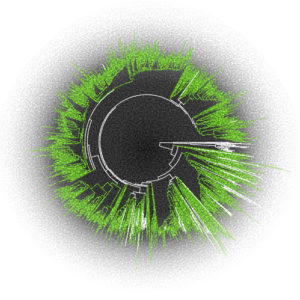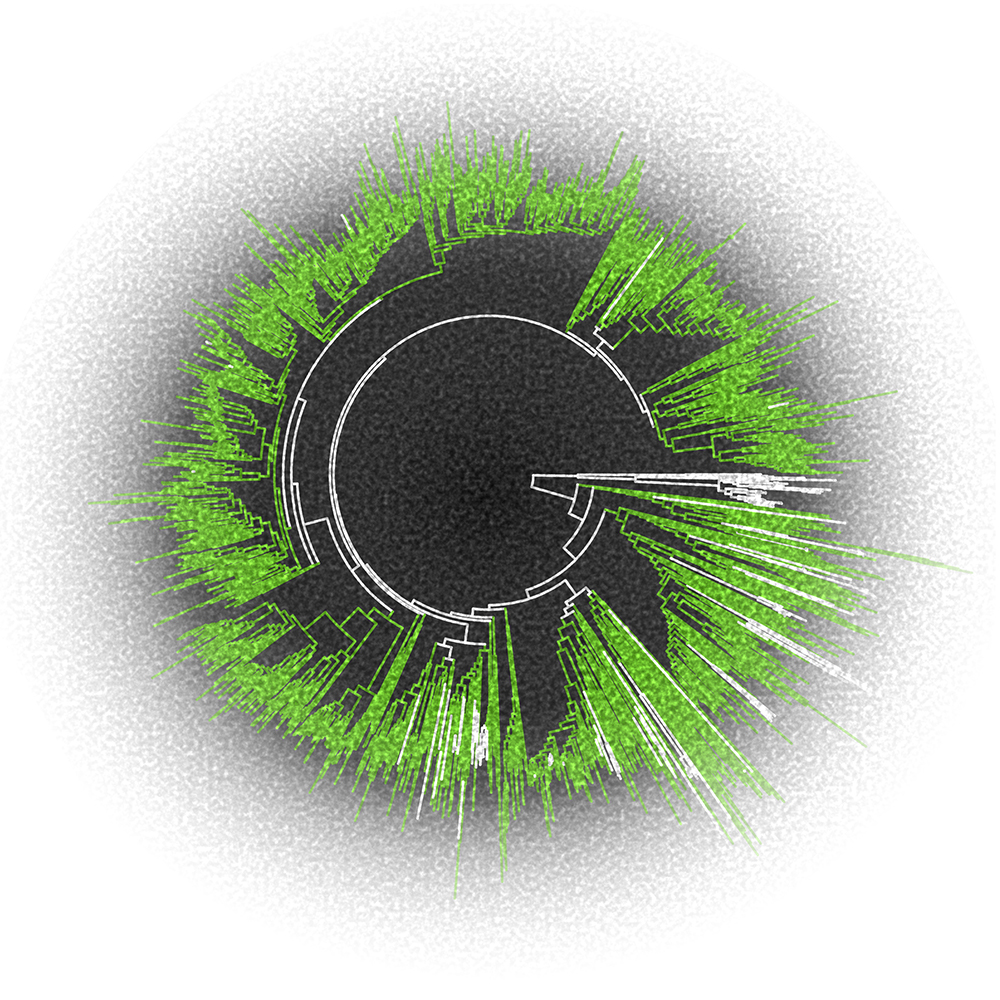
Metagenomic expansion of the diversity of the Nucleocytoplasmic Large DNA Viruses. The phylogenetic tree shows 2,074 giant virus metagenome-assembled genomes (green) together with 205 previously published viral genomes (white). (Frederik Schulz)
While the microbes in a single drop of water could outnumber a small city’s population, the number of viruses in the same drop—the vast majority not harmful to humans could be even larger. Viruses infect bacteria, archaea and eukaryotes, and they range in particle and genome size from small, to large and even giant. The genomes of giant viruses are on the order of 100 times the size of what has typically been associated with viruses, while the genomes of large viruses may be only 10 times larger. And yet, while they are found everywhere, comparatively little is known about viruses, much less those considered large and giant.
In Nature, a team led by JGI researchers reported uncovering a broad diversity of large and giant viruses that belong to the nucleocytoplasmic large DNA viruses (NCLDV) supergroup. The expansion of the diversity for large and giant viruses offered the researchers insights into how they might interact with their hosts, and how those interactions may in turn impact the host communities and their roles in carbon and other nutrient cycles. Read more on the JGI website.




